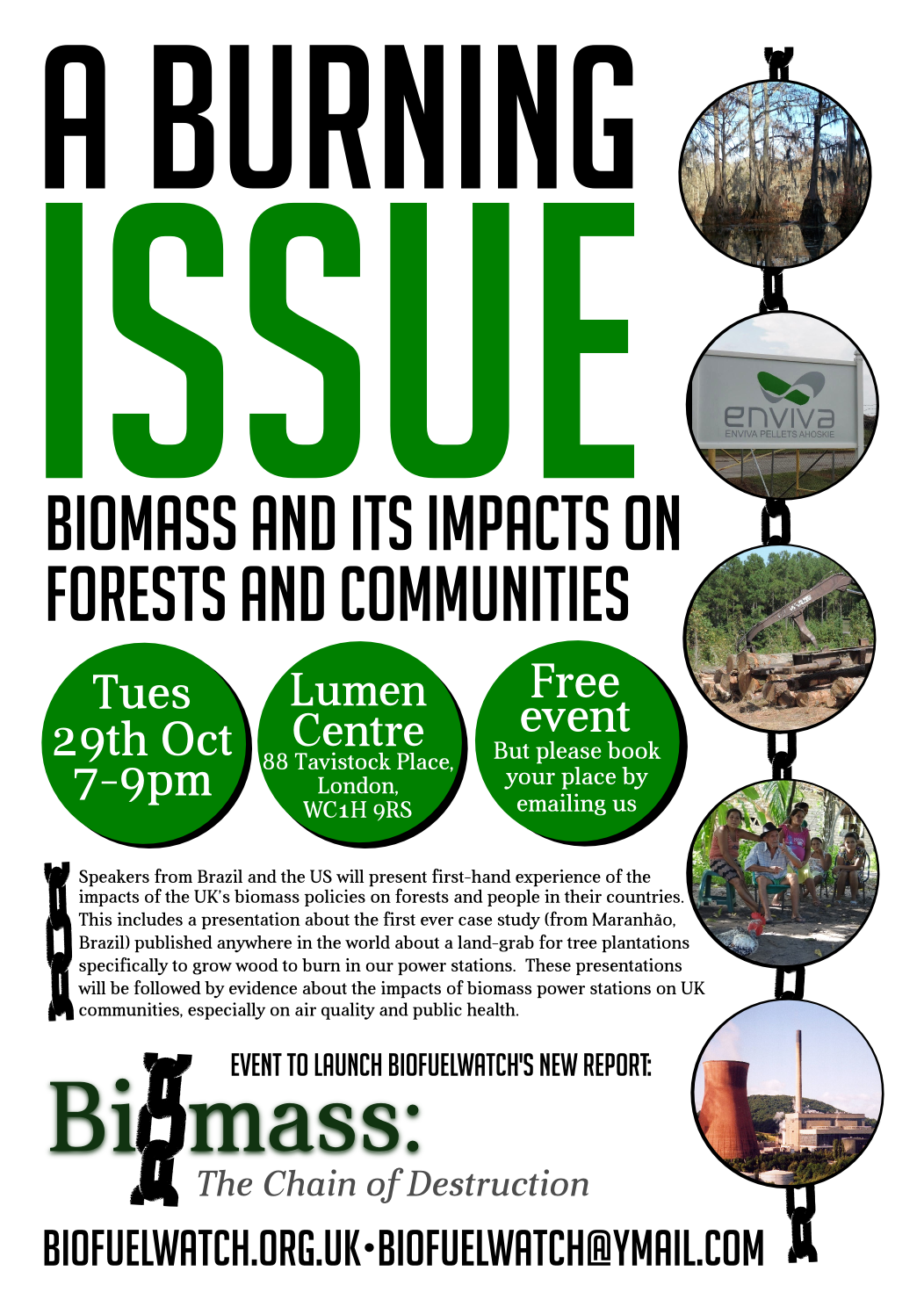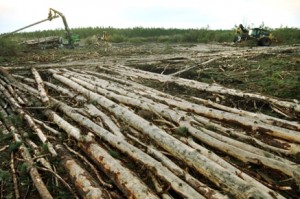For presentations and videos of the event please see here.
When: Tuesday, 29th October 2013, 7-9pm Facebook
Where: Lumen Centre, 88 Tavistock Place, London WC1H 9RS (close to St Pancras Station) http://www.lumenurc.org.uk/lumencontact.htm
What: Speakers from Brazil and the US will present first-hand experience of the impacts of the UK’s biomass policies on forests and people in their countries. This includes a presentation about the first ever case study (from Maranhão, Brazil) published anywhere in the world about a land-grab for tree plantations specifically to grow wood to burn in our power stations. These presentations will be followed by evidence about the impacts of biomass power stations on UK communities, especially on air quality and public health.
Free public event. But spaces are limited so please email us at biofuelwatch@ymail.com to reserve a space.
Speakers:
- Winnie Overbeek, Coordinator of the World Rainforest Movement, on the impacts of eucalyptus plantations in Maranhão, Brazil, being developed to produce wood pellets for export, including to the UK (via videolink)
- Scot Quaranda, Dogwood Alliance about the impacts of wood pellet exports, including to Drax and Ironbridge, on southern US forests (via videolink);
- Sophie Bastable, Biofuelwatch about the impacts of biomass electricity on UK communities
- Donna Liley from Mossley Environmental Action Group which objects to air pollution from wood dust, linked to woodchipping for biomass power stations
The event coincides with the launch of a new report, Biomass; The Chain of Destruction, published by Biofuelwatch, which includes an investigative report by World Rainforest Movement and CEPEDES (Center for Study and Research for the Development of the Southern Bahia Region) about the impacts of biomass eucalyptus plantations in Brazil.
Can you help us publicise this event? Download printable poster here. 
~~~~~~~~
Background to Biomass
The government has put big subsidies in place to encourage the burning of biomass for electricity generation. It is disregarding all of the science about the true and highly negative climate impacts of burning wood for electricity on a large scale – it has even made it clear that DECC’s own scientific advisor’s work on estimating carbon emissions from different types of biomass will be ignored for policy purposes until at least 2027!
The biggest biomass investments so far are going into the (partial and full) conversions of old coal generation stations. There are 5 with planning permission which could consume (at less that 40% efficiency) over 50 million tonnes of wood per year, most of it imported from the US and Canada. This is driving clear-felling of biodiverse, old-growth forests, often to be replaced by fast-growing monoculture plantations. Most of these power stations would have had to close shortly under EU pollution regulations. In many cases the conversion allows them to extend the coal burning life of these old inefficient plants.
There is also a growing dedicated biomass power station sector with existing projects predicted to consume up to 32 million tonnes of wood, most of it imported. This is likely to come from fast-growing trees in plantation, especially in the global south. Already Brazil has around 6.7 millions hectares of ‘green desert’ timber plantation, with devastating impacts on forests, communities, food and water sovereignty.
This means that current projects could create a wood demand of 82 millions tonne per year – more than 8 times the total UK annual wood production for all uses.
Pollution from burning wood is similar to that from coal, though more of some pollutants (such as very small particulates – which can have grave public health impacts) and less of others (especially sulphur dioxide – which is one of the main reasons why some coal power station units are being converted to biomass).
For more information about the Biomass for electricity industry here.

